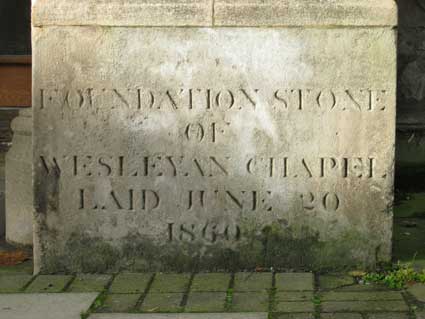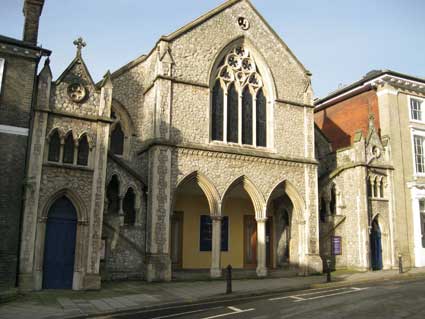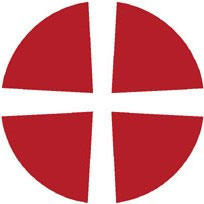History of the Church.



In 1812, a group of like-minded Wesleyans formed a congregation which met in Long Lane, and in 1816 they built themselves Ebenezer Wesleyan Chapel in Market Lane, both these now-lost Ipswich thoroughfares being in St Lawrence parish in the town centre.
At the time of the 1851 Census of Religious Worship, the Market Lane chapel was recorded as having 735 seats - that is to say, it was a large building.
The minister, Ebenezer Moulton, recorded about 300 worshippers present on the morning of the census, and about the same number in the afternoon.
In 1860, the community raised the money for a similar-sized church but with the addition of parish rooms and a school, to be built not far off in Museum Street.
The architect was Frederick Barnes, who designed a number churches in the Ipswich area, although he is perhaps best known for the Great Eastern Railway stations along the Ipswich to Cambridge line. This site in Museum Street was purchased for £1,300 in March 1860.
The foundation stone, to be found at the foot of the square pillar to the right of the three central arches, was laid by Mr William Pretty with a silver trowel which is on display in the church. The building opened for worship on Wednesday 27 March 1861. The church organ, a gift from William Pretty came from St Lawrence Church in Dial Lane.
William Pretty's name appears on other buildings in the town (including Alan Road Methodist Church).
A Minister's House was erected at the rear of the church and is still in use as Church Circuit Office with a flat on the first floor. Many improvements have been made since the opening in 1861. In 1935, when the organ was thought to be beyond repair, plans were made to replace it.
The Second World War saw the project shelved until 1948 when the organ was restored at a cost of £1,000.
In 1954, two cottages in Black Horse Lane, the property of the trustees, were demolished after they were condemned by the public health authorities and the area made into a car park.
In 1959, as the church prepared to celebrate its centenary, the front entrance lobbies were redesigned and the interior of the church reversed and modern lighting installed. From the new entrance you walk along a corridor which leads into the various parish rooms, and then eventually through a small doorway into the church beyond. With the gallery above, it is hard to imagine that the church was once the other way around.
The 1960s patronage of Bernard Sadler of the Sadler & Sons building firm, in memory of members of his family, provided one of the very best post-war windows in Ipswich, by AE Buss.
The four lights depict Christ in the Carpenter's Shop; Christ Healing the Sick, Of such is the Kingdom of God, and the Ascension of Christ.
The children in the Kingdom of God window are the grandchildren of the donor.
In 1988 Bishop and Son of Ipswich completely dismantled the organ, which had become tired, worn and dangerous with old electrics. The rebuild used around 800 existing pipes and added 600 new ones. Work was completed in 1990.
In 1999 the church again saw a big refurbishment “Millennium Faithlift”. A sophisticated lighting system was installed and a suspended glass cross radiates light to all points of worship. A rededication service was held in November 1999 by the minister the Rev David Blatherwick.
Chairs have since replaced pews.


 Museum Street Methodist Church
Museum Street Methodist Church